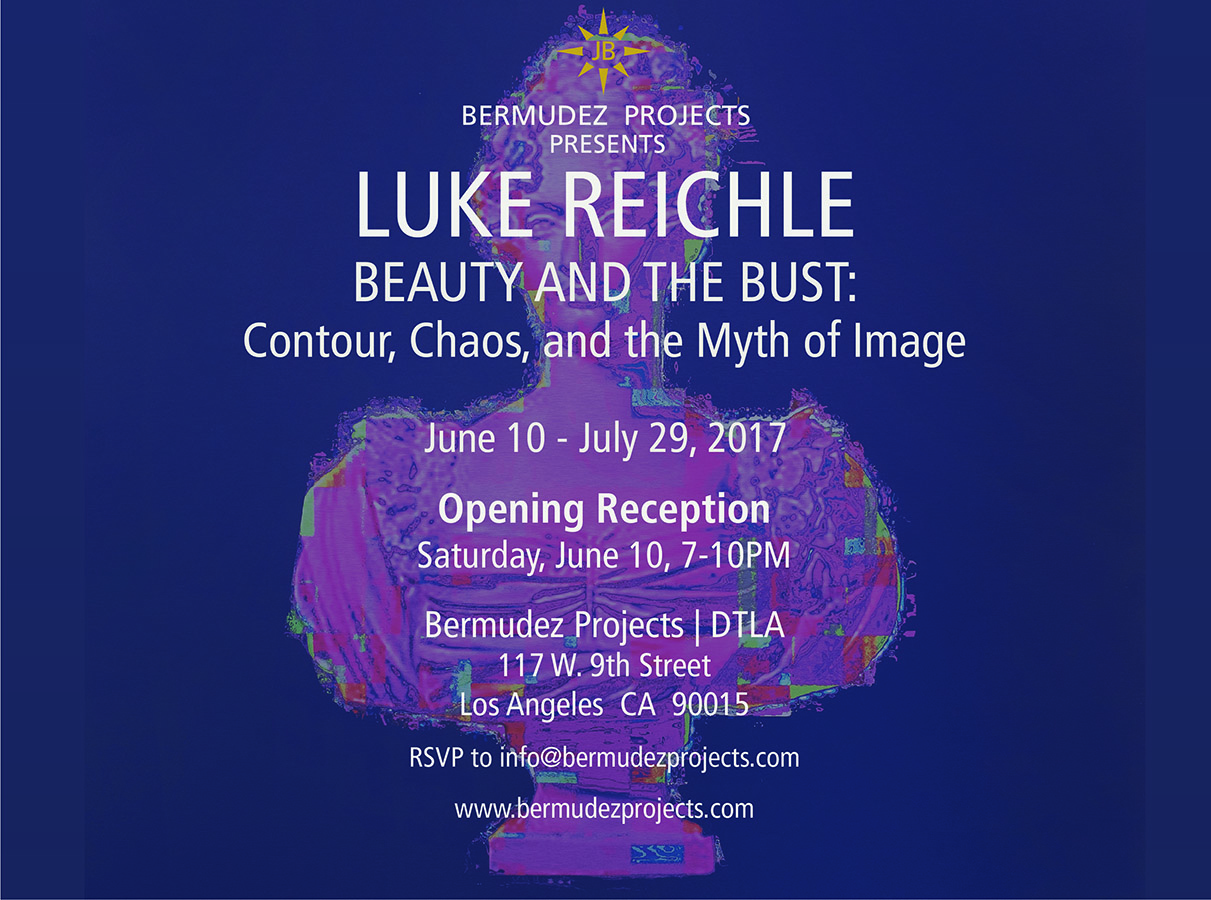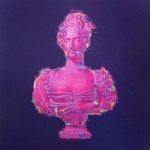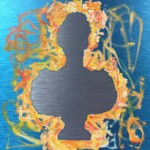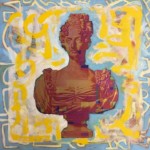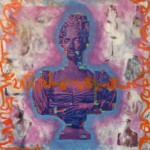June 10 through July 29, 2017
Opening Reception: Saturday, June 10, 7-10PM
The bust is a form of statuary originating in ancient times.
For more than 3,300 years, ever since the Creation of the famous image of Nertiti, it has served as a kind of anecdotal statue – a head, neck, and shoulder portrait in stone or bronze. Busts filled the homes of the Romans, the corridors of Versailles, and the niches in New York City’s Hall of Fame. They are a standard museum item all over the Western world. They gather moss and lichen in the gardens of the rich and hover in their foyers.
Then along came artist-polymath Luke Reichle, who says, “The contours and content of the bust has been a consistently recurring motif in my work since I began to draw.”
He has images of mutated busts into an art form confined by the pictureplane, but deconfined by his rampant imagination. In Beauty and the Bust, on view at Bermudez Projects June 10 through July 29, 2017, Reichle reduces classical busts into flat, 2-dimenstional constructs. The source material for both for his series “The Habsburg Variations” and “The Principessa Cycle,” are tourist snaps taken at Copenhagen’s Castle Rosenborg and Rome’s Villa Borghese respectively.
“With Beauty and the Bust, I explore the narrative of image by using the medium of the portrait bust. This form has been used for centuries as a way for the aristocracy to disseminate their image, starting with Augustan Era, where the emperors of that imperial age used portrait busts to communicate specific ideologies to the populace,” states Reichle. “It takes precedence as a visual tool when I’m working out a theme.”
“Design and studio art are inextricably linked in my practice,” he adds.
His transmogrified sculptures sometimes glow in impossible shades of mauve and lilac. They are highlighted by tiny bright points of light. Or they become simple silhouettes with gray metallic or abstract painted surfaces, set against a dark mono-color background.
“Fashion, costume design, and styling are in essence about the exploration of image and exposition of character,” states Reichle. “While largely figurative in nature, my studio practice relies on the dismantling of narrative imagery and the devolution of the visual cues that give us the illusion of identity.”
Reichle is an interdisciplinary artist with a decades-long studio practice in painting, printmaking, sculpture and drawing. For thirty years he’s also enjoyed a thriving and varied career in fashion and entertainment. He’s been working with professional design since he was 16. He was costume designer on such films as “The Fantasticks,” “Diggstown” and “The Scout,” and for TV series that include “CSI Miami,” “Castle,” and “Without a Trace.”
He is also an author and award-winning fashion writer with an international social media following.
His current bodies of work utilize a mash-up of traditional and digital media to create portraits of people, objects and ideas.
“In my work as a designer there is always a striving to perfect the image; the perfect representation of a character or the most flattering version of an individual,” states Reichle.
But his art now moves in another direction.
“The creation of image is at best, a mutable endeavor,” says Reichle. “Just as we finish one construct meant to satisfy our needs for identity, another paradigm emerges – the next best thing – rendering the current idea of ourselves void.”
He notes that there is an objective to his transformations of classic shapes.
“Beauty and the Bust is a story about how image will always change even, though our need for a structured identity remains predominant,” states the artist. “Begun by introducing chaos into the elements of the image in a digital format, it’s further reduced through evacuating the contour of its content, creating a void defined by the remaining silhouette.”
“The reintroduction of color and form gives rise to chaos and seems to encroach upon the narrative but in the end acts to refine the image and further define the contour, giving the viewer the opportunity to embrace or abandon the need to put the work into a relatable context.”
To his mind, Joni Mitchell describes this phenomenon best in Sweet Bird.
“Out on some borderline
Some mark of in-between
I lay down golden in time
And woke up vanishing.”


